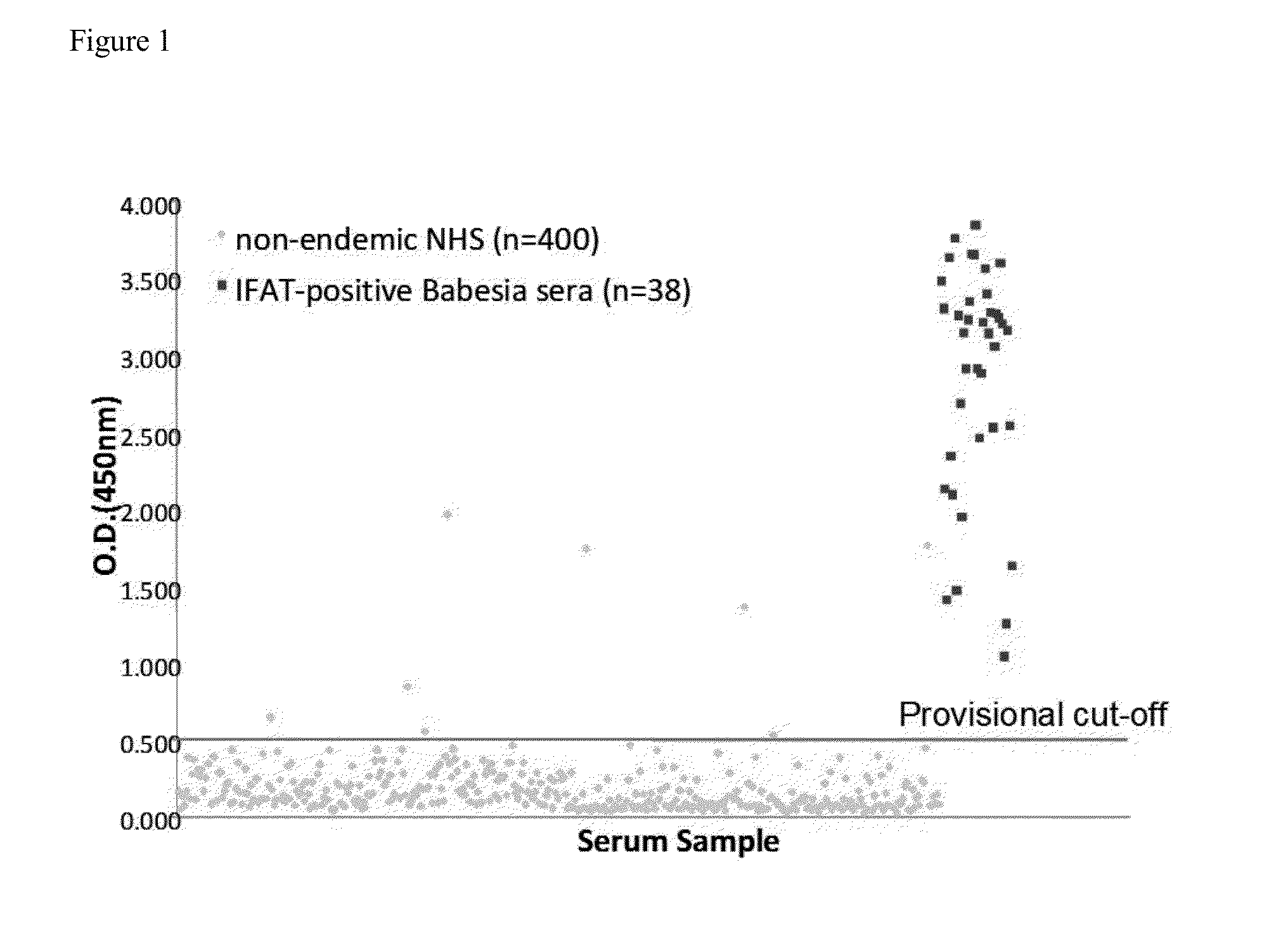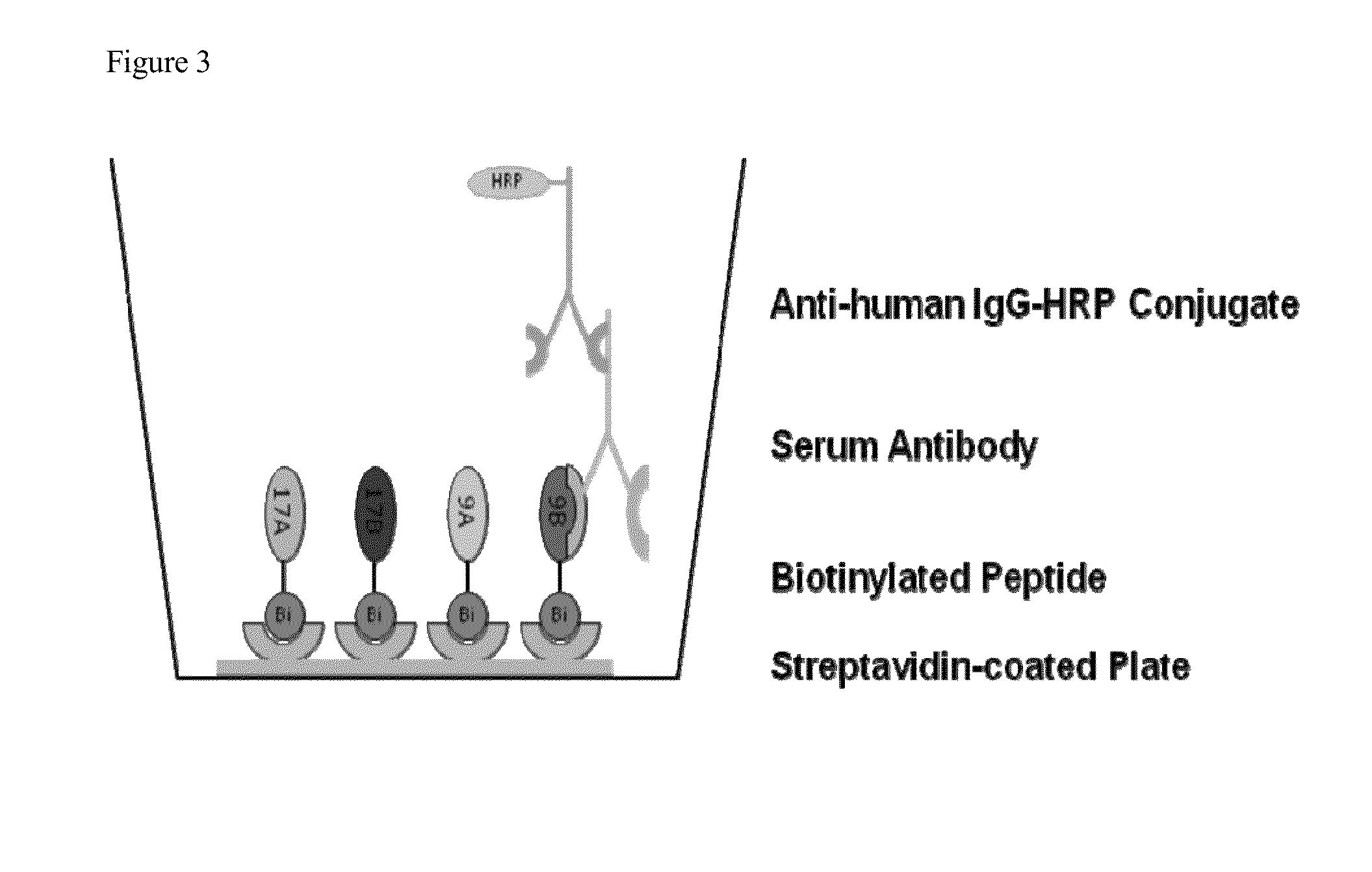Sensitive and Specific Assay for Babesia spp.
a sensitive and specific technology, applied in the field of sensitive and specific assays for babesia spp., can solve the problems of high risk of severe complex and even fatal disease, ttb continues to pose risk to transfusion recipients in the us, and achieves the effect of easy scalable for large-scale production
- Summary
- Abstract
- Description
- Claims
- Application Information
AI Technical Summary
Benefits of technology
Problems solved by technology
Method used
Image
Examples
example 1
Development of a Sensitive and Specific ELISA for Antibodies to Babesia Microti in Human Serum
[0087]Background: Human babesiosis is a tick-borne parasitic infection caused by several species of Babesia, including B. microti. The pathogen is endemic to the US Northeast and Upper Midwest. However, transfusion-transmitted infection has been documented for B. microti beyond the endemic region, hence the disease is a significant risk to the blood supply. Screening blood donors for Babesia has been proposed by the FDA and AABB, but a barrier to implementation of such a program has been the lack of an adequately sensitive and specific assay that is suitable for high-volume screening.
[0088]Methods: We have developed an ELISA for detection of antibodies to B. microti based on the use of Babesia antigen sequences originally identified as immunodominant through phage display screening. We have identified repeat regions in several of these antigens, from which synthetic peptides and recombinant...
example 2
Sensitive and Specific Peptide Based ELISA for Detection of Antibodies to Babesia Microti
[0108]Background: Human babesiosis is a tick-borne parasitic infection caused by several species of Babesia, the most common of which is Babesia microti. B. microti is endemic to the US Northeast and Upper Midwest. The FDA's annual report on blood product deviations described eight cases of transfusion-transmitted babesiosis in 2011, indicating that B. microti-contaminated donor blood is a significant threat to the blood supply. Screening blood donors for Babesia has been under discussion by the FDA and the AABB. A barrier to implementation of such screening has been the lack of a sensitive and specific assay that is suitable for high-volume screening. No licensed tests are currently commercially available.
[0109]Methods: We have developed a peptide-based microwell ELISA for detection of antibodies to B. microti, based on the use of Babesia antigen sequences originally identified as immunodomina...
PUM
| Property | Measurement | Unit |
|---|---|---|
| dissociation constant | aaaaa | aaaaa |
| dissociation constant | aaaaa | aaaaa |
| dissociation constant | aaaaa | aaaaa |
Abstract
Description
Claims
Application Information
 Login to View More
Login to View More - R&D
- Intellectual Property
- Life Sciences
- Materials
- Tech Scout
- Unparalleled Data Quality
- Higher Quality Content
- 60% Fewer Hallucinations
Browse by: Latest US Patents, China's latest patents, Technical Efficacy Thesaurus, Application Domain, Technology Topic, Popular Technical Reports.
© 2025 PatSnap. All rights reserved.Legal|Privacy policy|Modern Slavery Act Transparency Statement|Sitemap|About US| Contact US: help@patsnap.com



